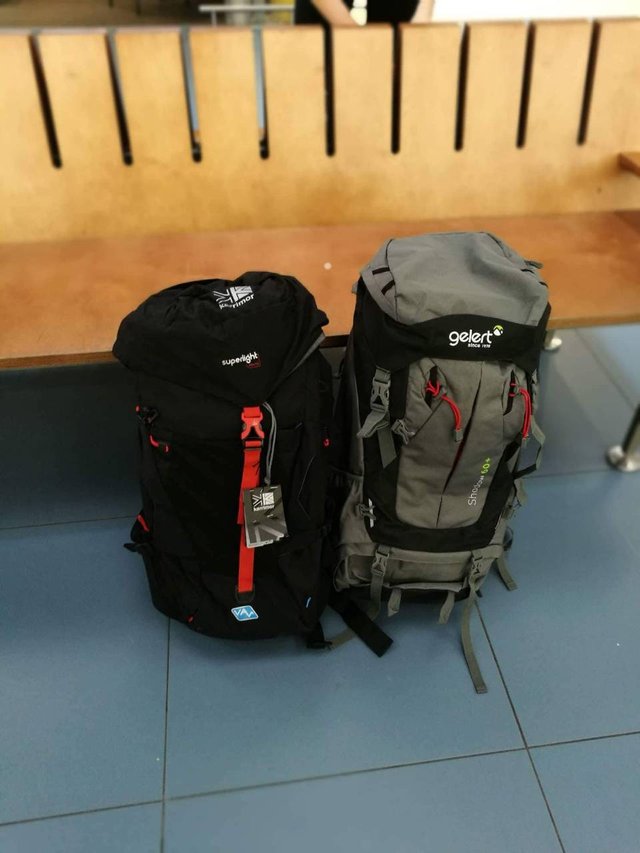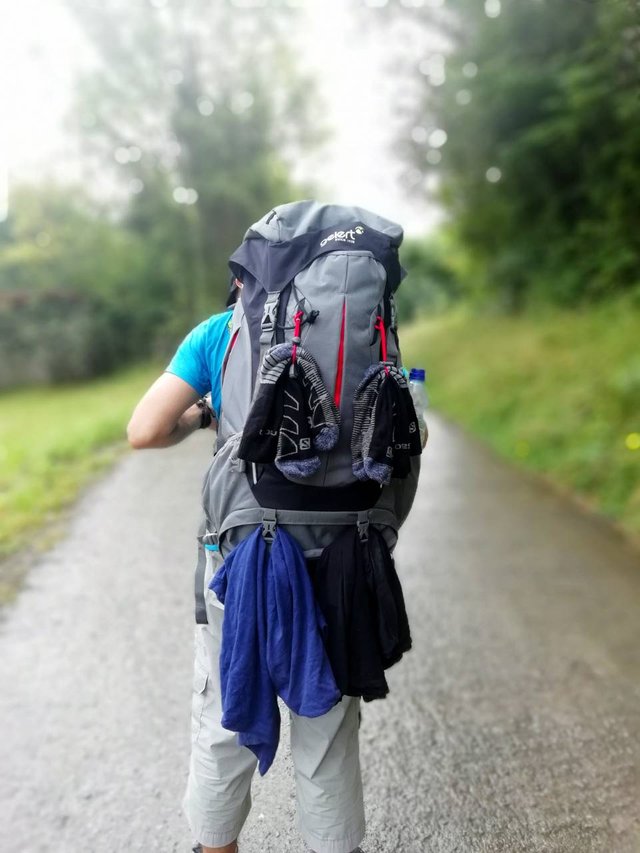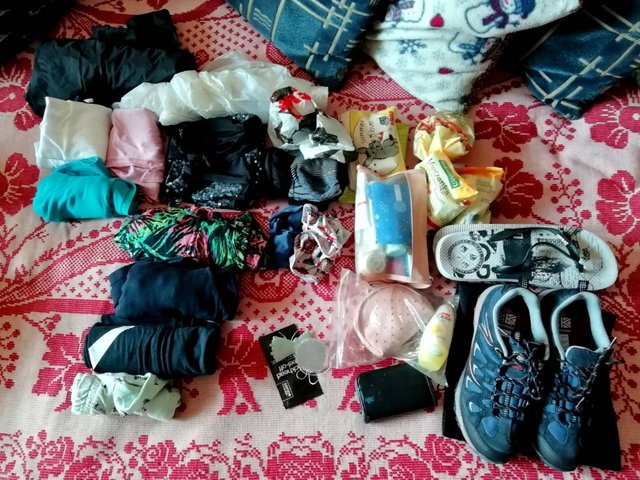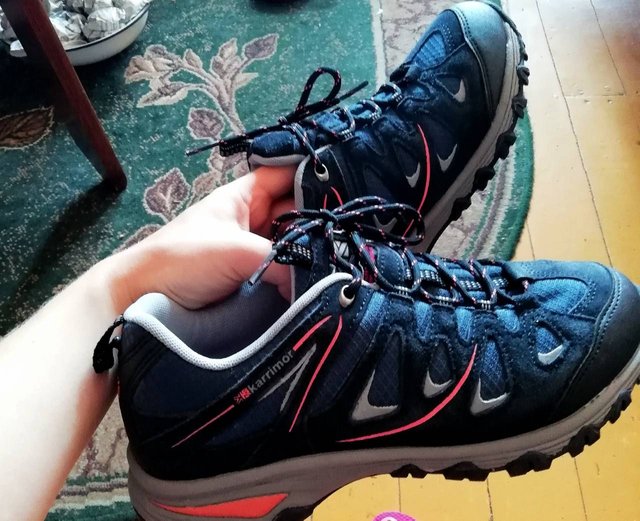Before I started my pilgrimage I had to figure out what items are necessary to bring with me. A lot of time went into googling things, but I still managed to make some decisions I wouldn’t make now. There are many blogs and websites where you can find this information, but I guess the importance of items mostly depends on the way you choose to go.
If you have a hard time understanding what the hell I am talking about, I suggest you check my previous introduction post about a journey of Camino.
I went to Camino del Norte which is a bit more challenging than most of the ways (except Ingles and Primitivo as far as I know). Besides, it is long and takes around 30-35 days to finish. Considering that, I set up a few basic rules to remember:
• First of all, you need to keep in mind that a lot will happen in those days, so you need to be prepared for everything and as well as possible;
• Some things are not worth taking with you if it’s possible to buy or find them on the way;
• You WILL lose and destroy things, so do not get attached to them, or do not consider bringing your favorite sweater, beloved teddy bear, etc.;
• Keep it light, because your backpack will most likely get heavier in time;
• You simply can’t make it perfect and mistakes will happen, but don’t worry about it.
So, with that in mind let’s start with the very first step which is choosing a backpack.
A good quality backpack is very important!
If you decide to save some money on your backpack, that means you made your first mistake. It is crucial that your backpack is comfortable and has spinal support because you will carry it every single day for at least 6 to 10 hours. Extreme durability is another key factor to look for. The last thing you want is a ripped strap or a hole somewhere because if that happens, you will have a hard time fixing it or worse, buying another backpack which will cost you more than you saved in a first place if you’re lucky enough to even find one.
Believe me when I’m saying that the backpack will endure some traumatic experiences. I met people who struggled with broken backpacks, just fixing them with duct tape or sewing holes every day. I was so glad it never happened to me. Choose a strong one and you will thank me later. After all, you get to keep it after your journey has ended.
 Our backpacks
Our backpacks
Personally, I chose Gelert brand and I couldn’t be happier about it. My companion chose Karrimor which was a bit lighter (980 grams only) compared to mine (2.2kg), though mine was bigger in terms of capacity and could fit 60+10 liters (+10 means the top expands if needed) instead of Karrimor that is 45+10 liters. Some would say my backpack was too big for Camino, but during the journey, my backpack was completely full until the top from the day 1.
Another important thing is your backpack supposed to have is rain cover, adjustable straps on every corner, breathable back and many, many pockets to carry or hide your things. But these are not as important as the rest. After all, the best way to choose a good backpack is to try it on and see how it feels. That’s how we did it, at least. Just don’t settle for something that feels cheap. You will regret it.
Now that we are done with choosing a backpack, it is time to fill it up with things you will need. I will start by saying a well-known rule you probably heard before.
Your backpack should not be heavier than 10% of your body weight.
That’s why a weight of a backpack should also be considered when buying. But honestly, I call bullsh*t on this one just because in the end I was carrying 15 kg backpack and walking 35-40 km a day without any difficulties. At that time my weight was around 65 kg, so it completely depends on your endurance and overall physical capabilities. Anyway, you get stronger as the days pass by.
NOTE: When you’re counting the weight of your backpack, don’t forget that you will also have to carry food and water. People tend to forget that.

So, let’s start with absolute necessities:
Two pairs of shorts. Don't need much explanation. Just choose the lightest material you can find with as many pockets as possible. A light material doesn't restrain your movements and it dries very fast. This is important because you will have to wash your clothes almost every day.
Sweatpants. Great for chilly mornings and evenings, great for walking when there is no sun. They are always comfortable. Sweatpants are great in general and you should have at least one of those.
Jacket or sweater. Both are good for keeping you warm, but I prefer a sweater. If you take a jacket, take a light one which provides protection from cold winds. A sweater will be bigger, but much more effective.
Raincoat. There will be rain, so be ready for that.
Hat. Without a hat, you're risking to just pass out.
3 T-shirts, 3 pairs of underwear, 3 pairs of socks. If you take less, you will have problems. If you take more, you will not use them all. Take at least three of each, because on your way you will most likely lose something anyway. It is better to lose underwear and still have two pairs than only one. Also, keep in mind that T-shirts and socks are best if made from cotton. Nothing is better than cotton.
Towel. One is enough, but it should be very light and small. Bringing a huge towel will bring more problems, especially if it’s wet and doesn’t dry too well. You would be surprised how heavy wet clothes and towels are.
Sleeping bag. Even if you don't have a tent, a sleeping bag will save you when there are no blankets or if you don't want to use one that is not yours. Also, bed bugs in albergues (a.k.a. pilgrim hostels) are a common problem, so having your own sleeping bag saves some trouble. And you can sleep on the beach or in airports if you need to.
Charger for your phone. Obviously.
Power bank. If you have one of those cool smartphones that loses all its battery in 24 hours, power bank is absolutely necessary. You won’t always find a way to charge your tech, so do yourself and your siblings a favor and never run out of battery in the middle of nowhere.
Flip flops. Great for relaxing your feet after a long walk, also going to the shower where you really don’t want to stand barefoot.
Knife. If you come from the airport, you won't have one, but this is the first item you should buy before starting walking. A knife will come in handy every single day just because you need to cut that damn baguette and spread some cheese on it. A knife will be a friend to you in many different situations, so have it.
Needle and thread. That can be used for sewing things, but it is not for that. This is for fixing the blisters you will get on your feet. More about it in upcoming posts.
Antiseptic. That is one thing I wish I had from the beginning. When or if you get a bruise, an injury or a blister, it is important you use it. The last thing you want out there is an infected wound.
Medicine. Just something for most common colds or ailments. If you need something more specific, there are plenty of pharmacies around. Even if there are no pharmacies, people around you will help.
Patches. For covering wounds and healing blisters.
Small scissors. It is good to have them, they don't weigh anything and you will definitely use them at some point.
Shampoo, shower gel, toothpaste, and toothbrush. Hygiene is important, you know. Just take the small bottles, like the ones you carry to the airport.
Soap for clothes. You will wash your clothes every single day. If you don’t want to pay for washing machine (if there is one), you should have your own soap.
Sunscreen. Sun will try to kill you more or less every day. You should have it, but you can buy it almost anywhere if needed.
 Roll your clothes like this
Roll your clothes like this
This is pretty much everything you need to have to survive the whole trip, but I will provide you with yet another list of items you should consider bringing to your journey if you feel like you might need them. So:
Sleeping Pad. It is not necessary, so we didn't have it until our friend gave it away before she left. And it actually helped a lot. It doesn't weigh anything and you can sit anywhere. If you decide to have a break for food, you can set it up quickly almost anywhere. Also, if you need to sleep somewhere that is not a bed, you will be glad to have it.
Tent. One day we actually took a break and went to buy a tent. I don’t think it is important to have it, but it depends on a way you chose to walk and on a crowd that is walking to the same place you want to sleep. In some cases, it might save you, but you can manage without it. I will talk more about tents in my future posts.
Portable Stove. Nobody had it, but everybody wanted one. The gas is heavy to carry, but sometimes it is the only way to make and eat proper food if you can't afford the luxury of eating in a restaurant. Especially on Sundays when all the shops in Spain close at 2 p.m. Worth considering.
Metal bottle of water. I never had one, I just used a plastic bottle, but maybe it is not a bad idea. Plastic bottles tend to be dirty and they break. A metal bottle might save you some troubles.
Headlamp. It is amazing when you have to pack your things early in the morning. You just put it on top of your head and press the button. Much more comfortable than holding a phone in your hand and fixing your sleeping bag with another. Also helps tremendously if you decide to go on a night walk, or before the sun is up.
The second pair of boots. Personally, I don't think you need another pair, because I never used them. But that's only me. Some people get blisters and they don't want to use the same shoes again. A second pair is more for safety, but I doubt you will need them if you buy good quality shoes in the first place. Friendly tip: trekking shoes for walking are perfect, but I suggest you buy them 0.5 sizes bigger because your feet might get swollen. Also, before you start your journey, it is a good idea to walk with them a bit so they adapt to your feet. That’s how you avoid blisters.
 Trekking shoes for walking
Trekking shoes for walking
Notebook and pen. Can’t do any harm. Good for notes and thoughts.
There is one last thing you need to know before you start packing.
DO NOT, I repeat, DO NOT BRING makeup and books unless it's a small guidebook. You will never use them, trust me on that.
I will finish this guide with a few tips that should help you stuff your bag:
Distribute the weight. Don’t make one side of your backpack heavier than another one. It might cause injury.
Roll your clothes. I guess it is called army rolling. You just roll your clothes like in a picture above. Saves some space.
Put wet clothes on your backpack, not inside. They will be dry when you reach your destination. An example is in the second picture.
The most commonly used items should be at the top. You don’t want to unpack everything just to reach your charger or sweater.
So, that’s it. Following this ultimate guide will make you prepared for pretty much everything.
Buen Camino!
Fabulous list @vilius.
I resteemed your article. Not that I have the notion of walking the Camino, but the details in your preparation are so practical and would be worthwhile considering for any hiking adventure.
Downvoting a post can decrease pending rewards and make it less visible. Common reasons:
Submit
Well thank you, appreciate it :)
Downvoting a post can decrease pending rewards and make it less visible. Common reasons:
Submit
Pleasure. Looking forward to the continuation of your 'adventures' Vilius.
Downvoting a post can decrease pending rewards and make it less visible. Common reasons:
Submit